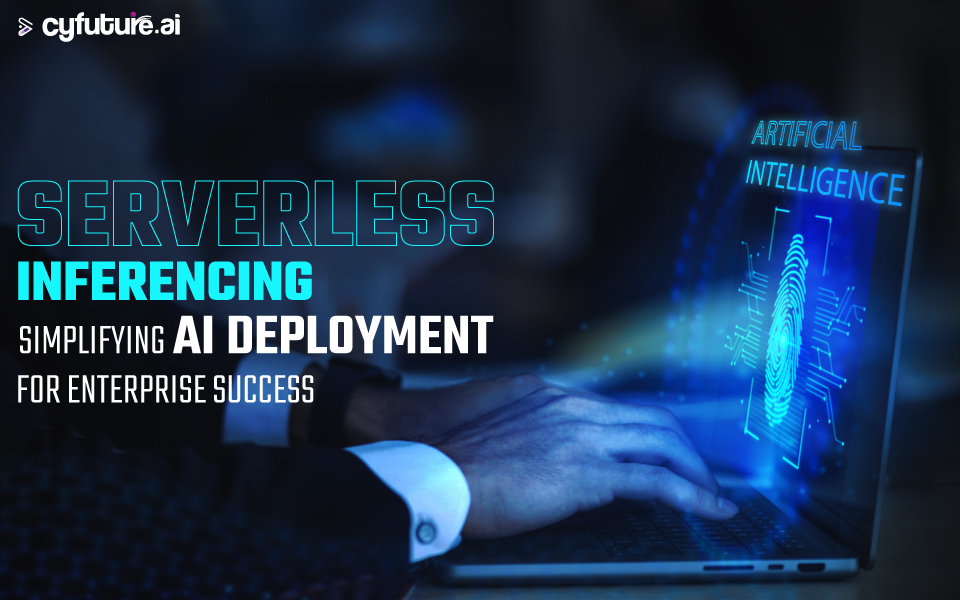The BFSI sector faces the challenge of standardizing Environmental, Social, and Governance (ESG) data, hindering effective analysis and comparison. AI presents a transformative solution to this dilemma. By leveraging advanced algorithms and techniques, AI can automate data processes, ensure accuracy and consistency, and facilitate compliance with reporting frameworks.
Here we explore how AI can help achieve ESG data standardization in the BFSI sector, enabling informed decision-making and fostering sustainable practices in the financial industry.
Artificial Intelligence can contribute to ESG data standardization in the Banking, Financial Services, and Insurance (BFSI) sector in several ways:
- Data Extraction and Cleansing:
- Natural Language Processing: Utilizing NLP libraries like spaCy or NLTK, AI models can apply techniques such as named entity recognition and part-of-speech tagging to extract specific ESG metrics from textual documents. For instance, identifying mentions of "carbon emissions" or "gender diversity ratios" in annual reports.
- Data Cleansing Algorithms: AI algorithms can employ data cleansing techniques such as outlier detection, missing value imputation, or data normalization to ensure the accuracy and consistency of ESG data. For example, replacing missing values in ESG indicators with imputed values based on statistical methods like mean imputation.
- Use Case: AI algorithms can automatically extract ESG-related data from various sources, such as annual reports, sustainability reports, and regulatory filings. NLP techniques can identify and extract specific ESG metrics, such as carbon emissions, diversity ratios, or renewable energy usage.
- Example: Natural language processing models can analyze textual documents and extract relevant information, such as the percentage of female board members, total energy consumption, or greenhouse gas emissions. This ensures standardized extraction of ESG data points across different documents.
- Taxonomy Development:
- Clustering Analysis: AI models can use unsupervised learning algorithms like K-means clustering to identify clusters or groups of similar ESG metrics within a dataset. This helps in understanding the underlying structure and relationships between different ESG metrics, contributing to taxonomy development.
- Topic Modeling: Techniques like Latent Dirichlet Allocation (LDA) can be applied to identify latent topics within ESG data. By identifying common themes and keywords, AI models can assist in the development of standardized ESG taxonomies.
- Use Case: AI can assist in developing standardized ESG taxonomies by analyzing large volumes of ESG data. Machine learning techniques like clustering or topic modeling can identify common themes and hierarchies within the data, leading to the creation of industry-wide or regulatory-aligned taxonomies.
- Example: By analyzing ESG data from various companies, AI algorithms can identify common ESG categories, such as environmental impact, social responsibility, or governance practices. These categories can be further classified into sub-categories, creating a standardized ESG taxonomy that facilitates consistent reporting and analysis.
- Data Mapping and Integration:
- Machine Learning Models: AI models can be trained using supervised learning algorithms such as decision trees or support vector machines (SVM) to learn the mappings between specific ESG data points and reporting frameworks.
- Semantic Similarity: Utilizing techniques like Word Embeddings or Universal Sentence Encoders, AI models can measure the semantic similarity between ESG data points and reporting framework requirements. This helps in identifying the most appropriate mapping between data and reporting fields.
- Use Case: AI can map ESG data to established reporting frameworks and standards. Machine learning models can learn the relationships between different ESG metrics and reporting requirements, enabling the automatic mapping of specific data points to the appropriate reporting fields.
- Example: An AI system can analyze ESG data from a financial statement and map the relevant metrics to reporting frameworks such as GRI or SASB. For instance, it can map energy consumption data to the GRI indicator G4-EN3 or map gender diversity data to the SASB standard SD-MD-110a.
- Data Validation and Consistency Checks:
- Statistical Analysis: AI algorithms can perform statistical analysis on ESG data to identify discrepancies or outliers. This can include methods such as hypothesis testing, regression analysis, or data distribution analysis to validate the accuracy and consistency of the data.
- Data Quality Rules: AI systems can be designed to apply predefined data quality rules to ESG data, flagging any data points that violate these rules. For instance, checking if reported emissions exceed industry benchmarks or if financial metrics are inconsistent with reported sustainability performance.
- Use Case: AI algorithms can perform automated validation and consistency checks on ESG data. By comparing data across different sources or over time, AI models can identify discrepancies, outliers, or potential data quality issues, ensuring accurate and consistent ESG data.
- Example: AI can compare reported carbon emissions data from different sources, such as annual reports and verified third-party databases, to ensure consistency. It can identify inconsistencies or outliers that may require further investigation, such as significant changes in reported emissions between two consecutive years.
- Data Harmonization:
- Data Transformation: AI systems can employ data transformation techniques like unit conversion, normalization, or standardization to harmonize ESG data. For example, converting energy consumption data from different units (e.g., kWh, MWh) into a consistent unit (e.g., MJ).
- Textual Data Processing: Natural Language Processing techniques can be used to identify and standardize terminology within ESG data. This involves tasks like synonym mapping, entity resolution, or text normalization to ensure consistent representation of ESG information.
- Use Case: AI can facilitate the harmonization of ESG data from diverse sources by standardizing formats, units of measurement, or terminology. AI algorithms can match and reconcile variations in data elements, ensuring consistent representation of ESG data across different datasets.
- Example: An AI system can harmonize data related to energy consumption by converting units of measurement (e.g., kilowatt-hours to megajoules) or normalizing terminology (e.g., "GHG emissions" to "Greenhouse gas emissions"). This enables consistent aggregation and analysis of ESG data from multiple sources.
- Reporting Automation:
- Data Integration Frameworks: AI systems can leverage data integration frameworks like Apache Spark or Apache Kafka to collect and aggregate ESG data from various sources, ensuring efficient data collection and consolidation.
- Report Generation Templates: Utilizing AI-powered reporting platforms, templates can be created that dynamically populate ESG reports with standardized data. This involves using data merging techniques, formatting rules, and report generation libraries to automate the report creation process.
- Use Case: AI can automate the process of ESG data aggregation and reporting, ensuring standardized reporting formats that align with regulatory requirements or industry standards. AI systems can collect, validate, and consolidate ESG data from various sources, streamlining the reporting process.
- Example: An AI-powered reporting platform can automatically gather ESG data from internal systems, external databases, and industry-specific sources. It can then generate standardized ESG reports, pre-populated with the relevant data, and formatted according to reporting frameworks such as TCFD or CDP.
- Continuous Monitoring and Compliance:
- Real-time Data Processing: AI systems can employ stream processing frameworks like Apache Flink or Apache Kafka to handle real-time data streams of ESG metrics. This allows for continuous monitoring and analysis of data, enabling timely detection of deviations or anomalies.
- Anomaly Detection Algorithms: AI models can utilize machine learning algorithms such as autoencoders or one-class SVM to detect anomalies in real-time ESG data. For instance, identifying sudden spikes in emissions data or unexpected changes in diversity metrics.
- Use Case: AI can support continuous monitoring and compliance efforts by analyzing real-time data streams to identify changes or anomalies in ESG metrics. AI models can trigger alerts when deviations occur, enabling proactive management of compliance issues.
- Example: AI algorithms can monitor real-time data on a company’s energy consumption and compare it to historical data or predefined thresholds. If there is a significant increase in energy usage, the system can automatically generate an alert, prompting further investigation into potential deviations from sustainability targets.
AI can play a crucial role in ESG data standardization in the BFSI sector by automating processes; it offers the potential to streamline operations, enhance data quality, and promote transparency in ESG reporting and decision-making.
Future of ESG Data Standardization in BFSI
The future of ESG data standardization in the BFSI industry is expected to be characterized by the following trends and developments:
- Increasing Demand for ESG Data: The demand for ESG data is likely to continue to grow as more investors and stakeholders focus on sustainability and environmental, social, and governance issues. Investors are increasingly looking to invest in companies that demonstrate a strong commitment to sustainability, and ESG data is crucial in identifying these companies.
- Development of ESG Standards and Frameworks: The development of ESG standards and frameworks, such as the Global Reporting Initiative (GRI) and the Sustainability Accounting Standards Board (SASB), will continue to promote standardization and transparency in ESG reporting. These standards provide guidelines for companies to report their ESG performance, which helps investors compare and evaluate companies based on their ESG performance.
- Technological Advancements: The use of advanced technologies, such as artificial intelligence (AI) and blockchain, will continue to revolutionize the way ESG data is collected, analyzed, and reported. AI is used to analyze large amounts of ESG data, providing investors with valuable insights into a company's ESG performance. Blockchain technology is used to create secure and transparent records of ESG data that are shared among multiple parties.
- Regulatory Initiatives: Governments and regulatory bodies around the world are increasingly introducing regulations to promote ESG data standardization and transparency. For example, the EU has introduced the Sustainable Finance Disclosure Regulation (SFDR), which requires asset managers to disclose the ESG characteristics of their investment products.
- Integration of ESG Data into Investment Decisions: As investors continue to incorporate ESG factors into their investment strategies, the integration of ESG data into investment decisions is likely to become more prevalent. ESG data is becoming an essential part of the investment decision-making process, with investors relying on it to identify sustainable investment opportunities and manage risk.
Conclusion
As the world grapples with the urgent need for responsible and ethical business practices, AI emerges as a transformative force that can revolutionize the integration of Environmental, Social, and Governance factors.
In the dynamic landscape of finance, AI’s integration with ESG data standardization offers a transformative path towards sustainable practices. AI’s rapid data processing and predictive capabilities uncover valuable insights, enabling informed decisions for both profitability and responsible impact.
Despite challenges like privacy and bias, AI’s potential to drive transparent and credible ESG reporting is undeniable. By embracing AI as a partner in fostering transparency, accountability, and societal well-being, the BFSI sector can lead the charge towards a future where finance and sustainability are harmoniously intertwined, benefiting not only the industry but the global community at large.



































